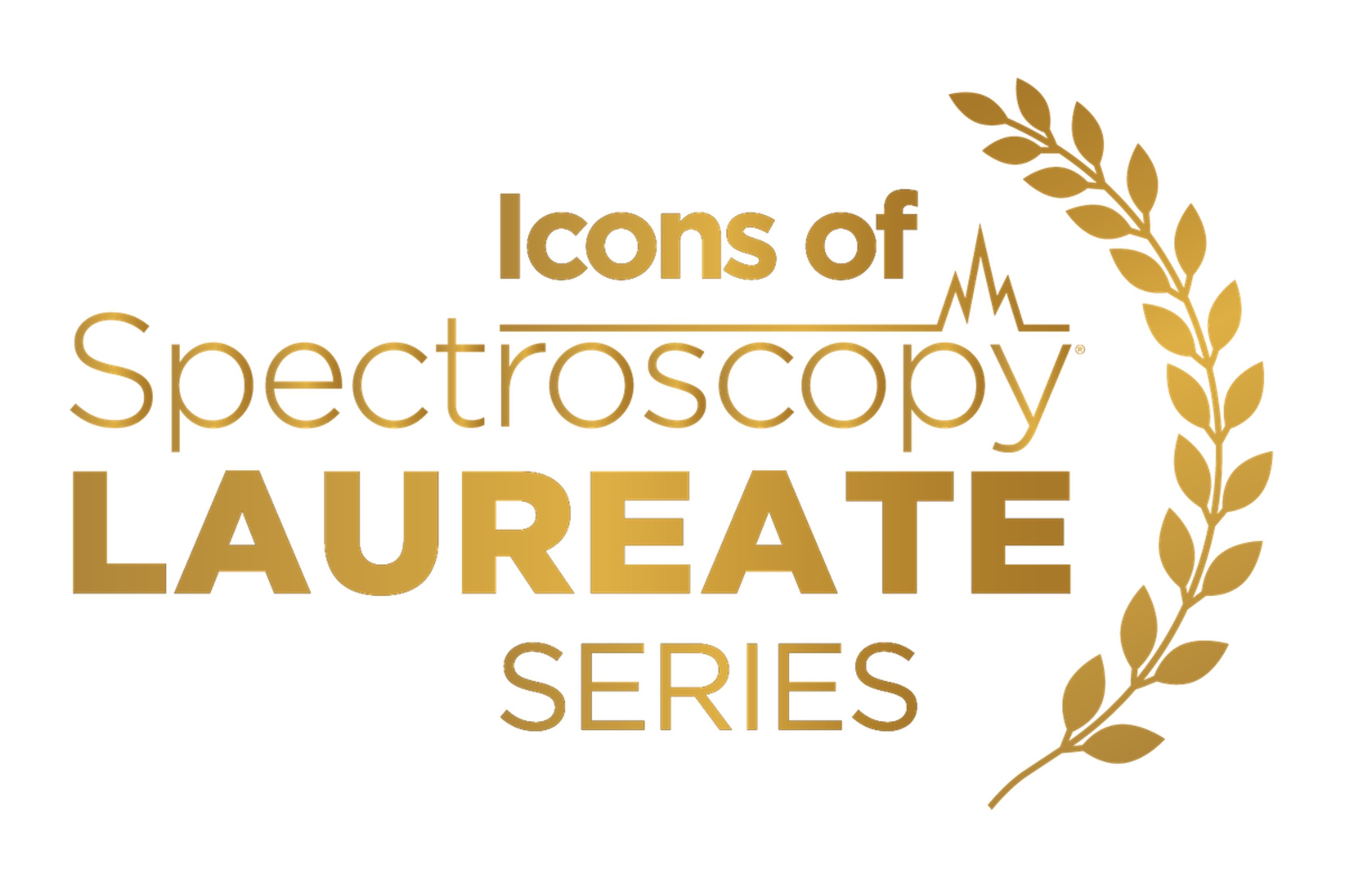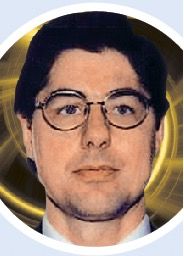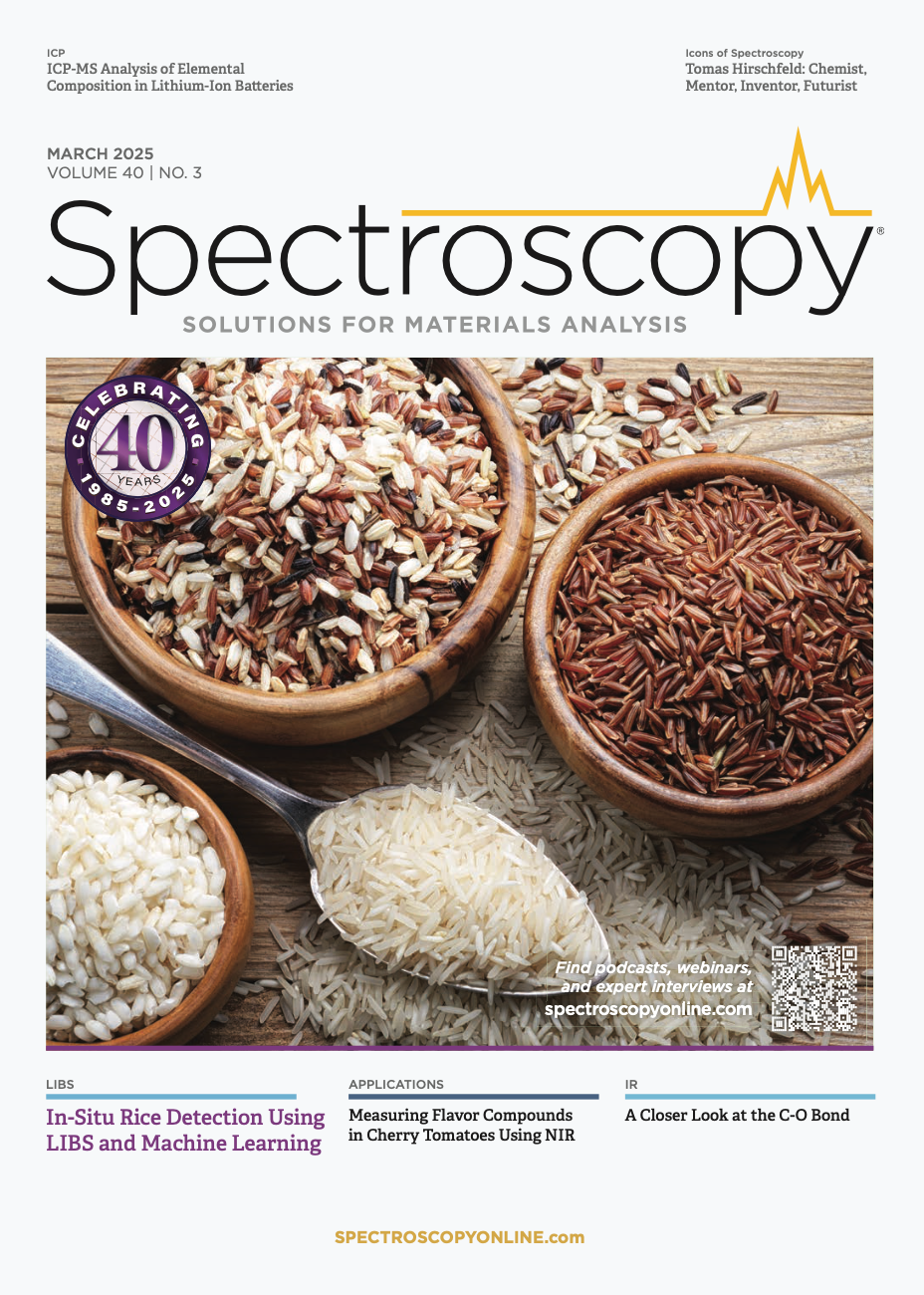Tomas Hirschfeld: Prolific Research Chemist, Mentor, Inventor, and Futurist
In this "Icons of Spectroscopy" column, executive editor Jerome Workman Jr. details how Tomas B. Hirschfeld has made many significant contributions to vibrational spectroscopy and has inspired and mentored many leading scientists of the past several decades.
Tomas B. Hirschfeld was a pioneering chemist and inventor whose contributions to spectroscopy, biomedical diagnostics, and sensor technology, including infrared and Raman spectroscopy, and fiber-optic sensors, revolutionized chemical analysis, and medical diagnostics.

Tomas B. Hirschfeld (1939–1986) was a brilliant chemist, inventor, and innovative researcher in the fields of spectroscopy, analytical cytology, and sensor technology. Known for his creative and enthusiastic spirit and groundbreaking work, Hirschfeld’s contributions transformed biomedical diagnostics, remote sensing, and chemical analysis. Born in Uruguay to German-Jewish parents, he overcame early challenges to emerge as an influential figure in the global scientific community. His life’s work—spanning two Ph.D.s, over 100 patents, and nearly 200 public scientific publications—continues to impact multiple fields of study (1–4). Hirschfeld was an influential figure in the field of analytical chemistry, particularly known for his profound impact on spectroscopic techniques and chemometrics. His work at Lawrence Livermore National Laboratory (LLNL) and Block Engineering led to innovations such as the first commercial Fourier transform infrared (FT-IR) spectrometer and the development of fiber-optic sensors, which have been foundational to the field of chemical analysis. His curiosity was boundless, inspiring many colleagues and students to explore novel ideas, often ahead of their time. For example, his early exploration of remote Raman spectroscopy, mobile Raman systems, and FT-Raman proved to be cutting-edge and continues to shape research today. Hirschfeld's ability to think outside the box, demonstrated by his unconventional methods like "differential writing" in tiny notebooks, showcased his genius and left a lasting legacy on those who worked with him (1–4,11,12).
Tomas B. Hirschfeld (Photo Courtesy of Reference [1])

Early Life and Education
Hirschfeld’s academic journey began at Vasquez Acevedo College, where he demonstrated early aptitude in science and languages. After earning his bachelor’s degree, he pursued further education at the National University of Uruguay, where he earned two Ph.D. degrees: one in chemistry (summa cum laude in 1967) and the other in chemical engineering. This dual expertise laid the foundation for his later interdisciplinary breakthroughs. His multilingual abilities (fluent in Spanish, German, and English) and deep understanding of complex scientific principles allowed him to collaborate internationally and contribute to diverse areas of research (1–4).
Professional Journey in the United States
In 1969, Hirschfeld moved to the United States, joining Block Engineering. Here, he made substantial contributions to the development of both Fourier transform infrared (FT-IR) spectroscopy instrumentation and flow cytometry, an essential tool in biomedical diagnostics. His enhancements in multiple-illumination beam systems significantly improved the detection sensitivity of cytometers, enabling the identification and measurement of single virus particles and individual molecules—a capability previously unattainable (1–4).
In 1979, Hirschfeld transitioned to the Chemistry and Materials Science Department at Lawrence Livermore National Laboratory (LLNL). At LLNL, he focused on developing microsensors and advancing the field of fluorescence spectroscopy. His innovative use of fiber optics for chemical sensing was particularly influential, paving the way for modern remote and in situ diagnostics. Additionally, he served as an affiliate professor at multiple universities, mentoring and consulting to students and colleagues at Indiana University in Bloomington, and the University of Washington in Seattle, and at multiple industrial centers, such as Technicon Instruments, giving guidance to a generation of scientists (1–3,11,12).
Summary of Research Work
Hirschfeld’s research spanned a wide range of fields, including FT-IR, fluorescence microscopy, Raman spectroscopy, optical sensor technology, and classified research. His work was characterized by a unique blend of theoretical insight and practical application, often addressing complex challenges with elegant solutions (4–8).
Key Research Contributions
Hirschfeld’s work revolutionized flow cytometry, enabling the detection of single-virus particles and enhancing diagnostic capabilities in hematology and oncology. His advancements in FT-IR, Raman and FT-Raman spectroscopy improved material analysis by refining molecular vibration detection, now standard in laboratories globally. His contributions to fluorescence microscopy and microsensor development significantly enhanced imaging resolution and sensor sensitivity, impacting biomedical diagnostics, environmental monitoring, and national security (4–8,11,12).
Advanced Flow Cytometry
Hirschfeld’s work at Block Engineering led to significant improvements in flow cytometry. His innovations allowed cytometers to detect single-virus particles with unprecedented sensitivity, revolutionizing diagnostic techniques. These advancements laid the groundwork for modern flow cytometric analysis, which remains vital in medical diagnostics, particularly in hematology and oncology (4–8).
FT-IR and Raman Spectroscopy
At LLNL, Hirschfeld’s research in FT-IR, Raman and FT-Raman spectroscopy opened new avenues for material analysis and chemical sensing. His developments included novel methods for detecting molecular vibrations, which enhanced the accuracy and efficiency of spectroscopic measurements. These techniques are now standard measurement techniques in laboratories worldwide for analyzing complex organic and inorganic materials (4–8).
Fluorescence Microscopy
One of Hirschfeld’s most notable contributions was in the field of fluorescence microscopy. He demonstrated that structural resolution could surpass the Rayleigh limit by an order of magnitude, a breakthrough that significantly improved the detail and accuracy of microscopic imaging. His theoretical and experimental findings, particularly in the study of fluorescence quantum efficiency, have had lasting impacts on biomedical imaging (4–8).
Microsensor Development
Hirschfeld’s pioneering work on microsensors using fiber optics enabled the remote detection of chemical and biological substances. These sensors, capable of operating in extreme conditions, have applications ranging from environmental monitoring to national security. His optical tunneling remote sensor (1985) marked a significant leap, improving sensitivity and selectivity by 1,000-fold (4–8).
Biomedical Diagnostics and National Security
His contributions extended beyond pure science to practical applications in biomedical diagnostics and classified and unpublished research for national security. His development of sensitive immunoassays and remote fiber fluorimetry systems provided tools for rapid, accurate disease detection and environmental monitoring. His work on microscopic chemical sensors facilitated in situ immunoassays using lasers and fiber optics, influencing both medical and defense technologies.
Publications and Influence
Hirschfeld authored nearly 200 scientific articles, many of which remain foundational texts in spectroscopy and sensor technology. He was an editorial board member for prestigious journals such as the Journal of Applied Spectroscopy and Cell Biophysics. His publications covered diverse topics, from the principles of fluorescence microscopy to the development of new spectroscopic techniques (4–8).
His theoretical work on fluorescence quantum efficiency demonstrated that total photon yield is independent of factors like quantum efficiency and illumination duration. This finding paved the way for highly sensitive fluorescence tagging systems, essential for modern molecular biology research.
Summary of Patents
Hirschfeld’s inventive output—with more than 100 patents—spanned various domains, from spectroscopy to biomedical diagnostics. Each patent reflects his ability to address complex problems with innovative solutions. A recent patent search of issued U.S. patents is given in Table I. Hirschfeld's patents in nucleic acid and assay technologies laid the groundwork for modern molecular diagnostics and advanced cellular staining methods essential for histology and cytology. His innovations in optrode and remote sensing technologies enhanced chemical detection capabilities, with applications spanning environmental monitoring, medicine, and hazardous material analysis. Additionally, his contributions to spectroscopy and imaging, including fluorescence spectrometry advancements, significantly improved the accuracy and sensitivity of diagnostic and analytical measurements (7,8).
Nucleic Acid and Assay Technologies
Nucleic Acid Assay Methods
His patents, such as US-5242797-A and US-4716121-A, introduced techniques for detecting nucleic acids and conducting immunoassays, forming the foundation of modern molecular diagnostics.
Biological Staining
US-3899297-A advanced staining techniques for cellular analysis, crucial for histology and cytology.
Optrode and Sensing Technologies
Hirschfeld’s development of optrodes (US-4929561-A for absorption-emission sensing) revolutionized chemical detection. These sensors could detect minute changes in chemical environments, applicable in fields ranging from environmental science to medicine.
Detection and Measurement Systems
Innovations like the Virometer (US-3819270-A) provided rapid virus detection, essential for early diagnosis of viral infections. His gas sensors (US-4674320-A) and microdryer technology (US-4528078-A) further exemplified his versatility in addressing practical challenges.
Remote Sensing and Data Collection
Patents like US-4577109-A on remote fiber fluorimetry enabled the analysis of chemical samples over long distances, crucial for hazardous environments.
Spectroscopy and Imaging
His work in fluorescence spectrometry (US-4018530-A) and total reflection fluorescence (US-3604927-A) set new standards in the accuracy and sensitivity of spectroscopic measurements.
Legacy and Recognition
Hirschfeld’s contributions earned him six consecutive IR-100 awards, an unparalleled achievement. He received honors such as the Northern California Society for Spectroscopy Louis Strait Award (13) and the Society for Applied Spectroscopy William F. Meggers Award (14) for his pioneering work in spectroscopy. His influence extended internationally, with recognition in Who’s Who in America and Who’s Who in the World .
The Tomas Hirschfeld Award, established in 1990 by the International Council of Near Infrared Spectroscopy (ICNIRS), continues to honor his legacy by recognizing groundbreaking research in near-infrared spectroscopy for individuals not employed by instrument companies. This award highlights the enduring impact of his visionary work (9). Likewise, the FACSS Hirschfeld Scholar Award is given to a student who has furthered the state-of-the-art in their chosen field(s) and in so doing, advanced the understanding of important scientific or societal questions (10).
Personal Mentorship and Guidance
Hirschfeld’s mentorship was characterized by his ability to foster creativity and intellectual independence. His students and collaborators remember him not only for his vast technical knowledge but also for his infectious enthusiasm and joy, which made every interaction feel uplifting and intellectually enriching. His unconventional approach to teaching, such as conducting seminars without slides and encouraging spontaneous discussions, created an environment where innovation thrived. His vast collection of ideas, stored in a unique seemingly random filing system, inspired many future research projects. Despite his untimely passing at the age of 46, Hirschfeld’s influence is still evident in the work of his mentees and in the continuing relevance of his contributions to fields such as FT-Raman spectroscopy and chemometrics. His legacy is a reminder of the power of curiosity, mentorship, and interdisciplinary thinking in advancing scientific discovery. This is evidenced by the thoughtful comments from some of today’s leading analytical chemists, found in an article posted on the FACSS website (11). Mike Angel Carolina Trustee Professor, in the Department of Chemistry at the University of South Carolina, said, “My time with Tomas is still paying dividends after all these years.” Bruce Chase, DuPont Fellow at E.I. DuPont de Nemours (retired) and Research Professor at the University of Delaware, said of Hirschfeld, “What I really grew to appreciate was his curiosity—Tomas wondered about everything."
"[Hirschfeld] met with Ellis Lippincott's research group for a couple of hours and, as I found to be his [standard of practice] SOP, he discussed every topic that people raised," Peter Griffiths, Emeritus Professor of Chemistry at the University of Idaho reminisced. Gary M. Hieftje, Emeritus Distinguished Professor and Robert & Marjorie Mann Chair in the Department of Chemistry at Indiana University said, “During each visit [to Indiana], Tomas presented at least one lecture, always in the same style…and always with a new list of topics....He also met with many of our faculty and students, which resulted in a number of collaborations and joint research projects."
"Each summer he encouraged me to go through his idea drawer, pick out one or two to work on, and if he approved, those would be my summer project," Jonathan Sweedler, James R. Eisner Family Endowed Chair in Chemistry and Director in the School of Chemical Sciences at the University of Illinois, said. "Tomas kindled my analytical interests... his creativity and energy were boundless," he said.
Hirschfeld’s legacy is a testament to the transformative power of his knowledge, energy, enthusiasm, and his spirit of scientific innovation. His contributions to spectroscopy, sensor technology, and biomedical diagnostics continue to shape modern research and industry. His belief that “one person’s problem is another person’s solution” encapsulates the enduring relevance of his work. Through his patents, publications, and mentorship, Hirschfeld’s influence persists, inspiring future generations to explore new frontiers and pursue answers to puzzling questions in science and technology. An archive of many of Hirschfeld’s papers is found in reference (15).
References
(1) Shapiro, H. M. In memoriam: Tomas Hirschfeld (1939-1986). Cytometry 1986, Part A 7 (5), 399. https://onlinelibrary.wiley.com/doi/pdf/10.1002/cyto.990070502 (accessed 2025-02-19).
(2) Weekly Bulletin. Lawrence Livermore National Laboratory. 1986, 11 (17), (April 30), 1–2. PDF (courtesy of LLNL).(accessed 2024-12-05).
(3) “Obituary – Tomas Hirschfeld” Trends Anal. Chem. 1986, 5 (4), iv. DOI: 10.1016/0165-9936(86)80038-3
(4) “Tomas Hirschfeld – In Memoriam”, in “Cell Structure and Function by Microspectrofluorimetry”, Kohen, E. ed., Elsevier/Academic Press, 1989, xxiii-xxiv. DOI: 10.1016/B978-0-12-417760-4.50007-0
(5) Hirschfeld, T. Optical Microscopic Observation of Single Small Molecules. Appl. Opt. 1976, 15 (12), 2965–2966. DOI: 10.1364/AO.15.002965
(6) Hirschfeld, T. Quantum Efficiency Independence of the Time Integrated Emission From a Fluorescent Molecule. Appl. Opt. 1976, 15 (12), 3135–3139. DOI: 10.1364/AO.15.003135
(7) Tomas B. Hirschfeld, Justia Patents Home Page.https://patents.justia.com/search?q=Tomas+B.+Hirschfeld(accessed 2024-12-05).
(8) USPTO Patent Search Home Page. Results for Basic search query for Inventor "(Hirschfeld).in. AND (Tomas).in." Showing 54 records. https://ppubs.uspto.gov/pubwebapp/static/pages/ppubsbasic.html (accessed 2024-12-05).
(9) ICNIRS Tomas Hirschfeld Award Home Page. https://icnirs.org/tomas-hirschfeld-award/description-rules/(accessed 2024-12-05).
(10) Hirschfeld Scholar Award Home Page. https://scixconference.org/FACSS-Student-Hirschfeld-Awards#:~:text=The%20winner(s)%20of%20the,applications%20that%20eluded%20most%20practitioners. (accessed 2024-12-05).
(11) Recent Remembrances of Tomas B. Hirschfeld. SciX Web Page. https://scixconference.org/tomas-hirschfeld-remembrances/(accessed 2024-12-05).
(12) Grasselli, J. G. Tomas Hirschfeld Remembered. Mikrochim Acta 1987, 93, 13–17. DOI: 10.1007/BF01201679
(13) University of California: In Memoriam, May 1977, Louis Avrom Strait, Physics; Pharmaceutical Chemistry: San Francisco Page. (Courtesy of Mary Carrabba, The Coblentz Society). http://texts.cdlib.org/view?docId=hb1199n68c;NAAN=13030&doc.view=frames&chunk.id=div00092&toc.depth=1&toc.id=&brand=oac4 (accessed 2024-12-06).
(14) Applied Spectroscopy William F. Meggers Award Page.https://sas.memberclicks.net/william-f--meggers-award (accessed 2024-12-06).
(15) Tomas B. Hirschfeld Google Scholar Search Page.https://scholar.google.com/scholar?hl=en&as_sdt=0%2C3&q=Tomas+B+Hirschfeld+&oq=Tomas (accessed 2024-12-06).
About the Author
Jerome Workman, Jr. serves on the Editorial Advisory Board of Spectroscopy and is the Executive Editor for LCGC and Spectroscopy. He is the co-host of the Analytically Speaking podcast and has published multiple reference text volumes, including the three-volume Academic Press Handbook of Organic Compounds, the five-volume The Concise Handbook of Analytical Spectroscopy, the 2nd edition of Practical Guide and Spectral Atlas for Interpretive Near-Infrared Spectroscopy, the 2nd edition of Chemometrics in Spectroscopy, and the 4th edition of The Handbook of Near-Infrared Analysis. Author contact: JWorkman@MJHlifesciences.com●


AI-Powered SERS Spectroscopy Breakthrough Boosts Safety of Medicinal Food Products
April 16th 2025A new deep learning-enhanced spectroscopic platform—SERSome—developed by researchers in China and Finland, identifies medicinal and edible homologs (MEHs) with 98% accuracy. This innovation could revolutionize safety and quality control in the growing MEH market.
New Raman Spectroscopy Method Enhances Real-Time Monitoring Across Fermentation Processes
April 15th 2025Researchers at Delft University of Technology have developed a novel method using single compound spectra to enhance the transferability and accuracy of Raman spectroscopy models for real-time fermentation monitoring.
Karl Norris: A Pioneer in Optical Measurements and Near-Infrared Spectroscopy, Part I
April 15th 2025In this "Icons of Spectroscopy" column, executive editor Jerome Workman Jr. details how Karl H. Norris has impacted the analysis of food, agricultural products, and pharmaceuticals over six decades. His pioneering work in optical analysis methods including his development and refinement of near-infrared (NIR) spectroscopy has transformed analysis technology. This Part I article of a two-part series introduces Norris’ contributions to NIR.